How to set up electric fencing to optimise grazing
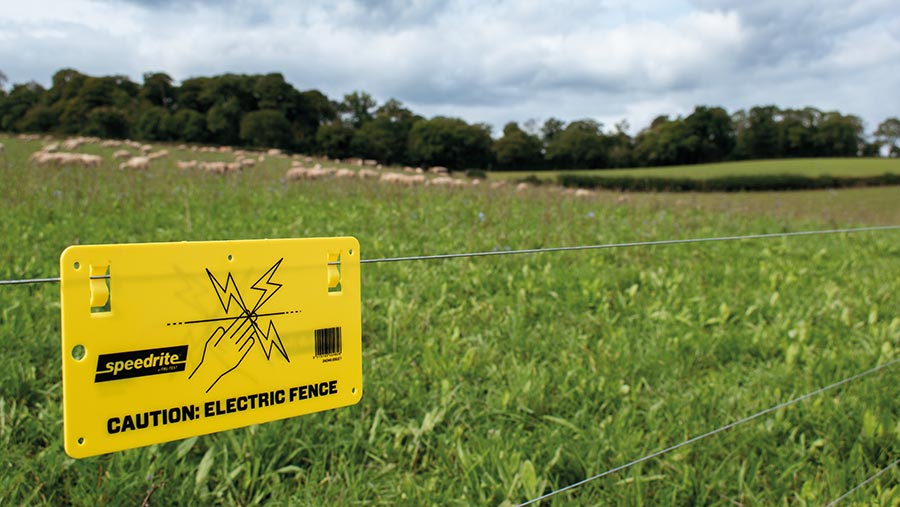 © MAG/Charlotte Cunningham
© MAG/Charlotte Cunningham Good use of electric fencing could see beef and sheep farmers significantly increase their grass growth.
This is according to Emyr Owen, grazing consultant at Precision Grazing, who says investment in electric fencing allows farmers to better control their time, animal movement and grass availability.
“Generally, what we see with clients is that the more we move our livestock round the grazing system, the more grass they will grow – with the potential to double grass production in a normal year.”
See also: 5 tips for managing livestock and grazing in drier weather
Here, Mr Owen, Emily Daniel of Progressive Farming Company, and John Frizzell, business development manager at Datamars Livestock, give their advice on the key considerations when setting up and using electric fencing.
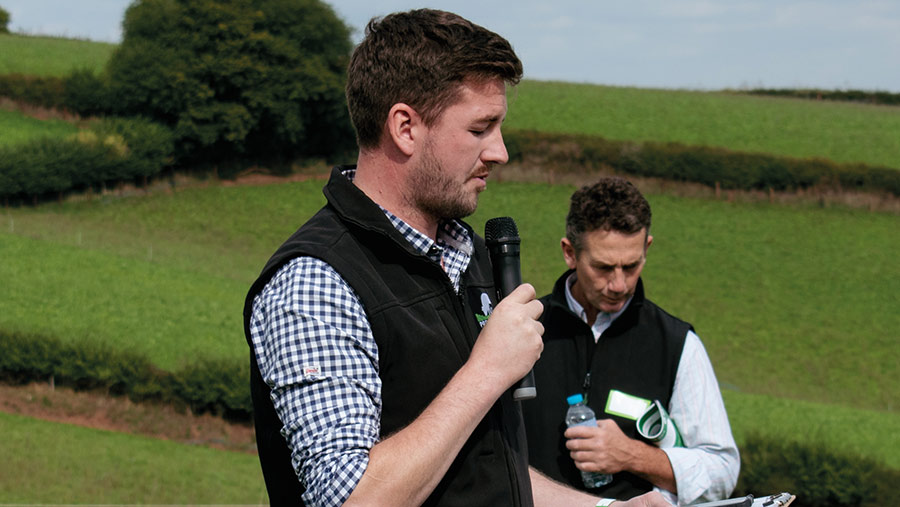
Emyr Owen © MAG/Charlotte Cunningham
Paddock allocation
The first step is designing and allocating grazing paddocks. As a general guide, livestock should be limited to no more than five days at a time in one paddock, says Mr Owen. “The shorter that time is, the more positive the effect on grass growth.”
Tightening up the rotation to achieve this can be achieved by grouping stock together to create bigger mobs. In turn, this will create a bigger area of ground rested at any one time, which is also beneficial for grass growth.
The number and size of paddocks required will vary from farm to farm, but as a minimum Mr Owen recommends that each livestock group on the farm should have six paddocks in the rotation.
Paddock size will be dependent on the group size and subsequently what their grazing demand is.
“Generally, what we find is a 1-2ha (2.5-5-acre) paddock system is a really flexible one and works for a lot of farmers and systems,” says Mr Owen.
This size paddock system will provide four to five days grazing for 200 ewes and lambs, 40 suckler cows and calves, or 60 yearling cattle, making it a very simple but robust system to implement and follow, he adds.
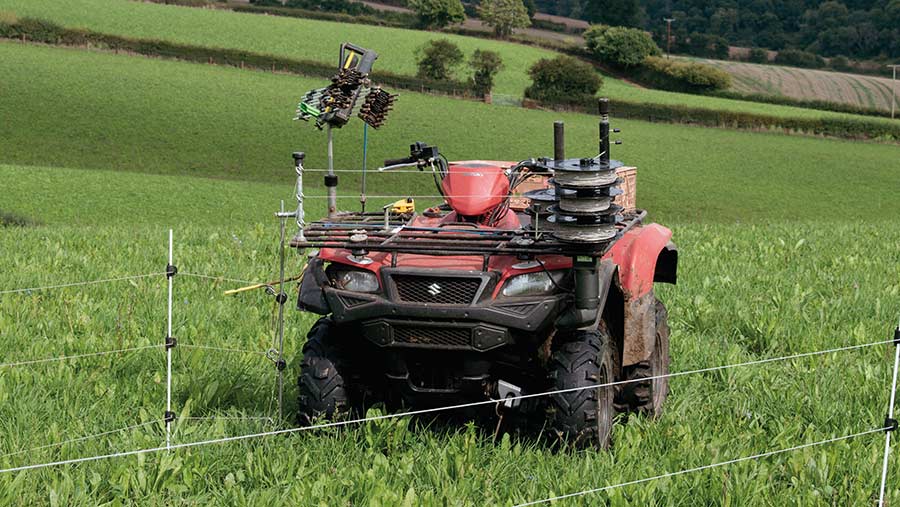
© MAG/Charlotte Cunningham
Choice of fencing
Good equipment is essential for maximising the efficiency of fencing.
Permanent or semi-permanent fences are good options for long-term fencing, explains Ms Daniel. “It will stay in the ground for 30 years, but if you wanted to pick it up it up and move it, you can.”
Arrow posts – fibreglass posts with a range of insulator options – are good for this type of fencing, she says. This is because they are installed solely using hand tools, meaning no heavy, expensive equipment is needed.
Post spacings for a three-wire fence would be about 10-15m apart with a high tensile wire, ending on a wooden strainer post, using end strainers, she adds.
The barbed head design also means they have a ferocious grip, which is particularly useful for undulating ground.
Plain posts are another option, and these are slightly more cost-effective, says Ms Daniel. “For a 3m fence, with the arrow post you’d be looking at a price starting at 94p/m – going up to £1.25/m if you’re putting hyper-springs and gates in.
“[With] a plain post, for 3m, you’d be looking at 64p/m, going up to around 96p/m if you’re putting in high-tensile gates.”
The downside of the permanent option is that tools are needed to take the fencing back out. It is worth considering whether this is the best choice if a field may be used for silage in the future, for example, she adds.
There are several options for temporary fencing. For 300m, a three-wire temporary fence would start at about 99p/m, she says.
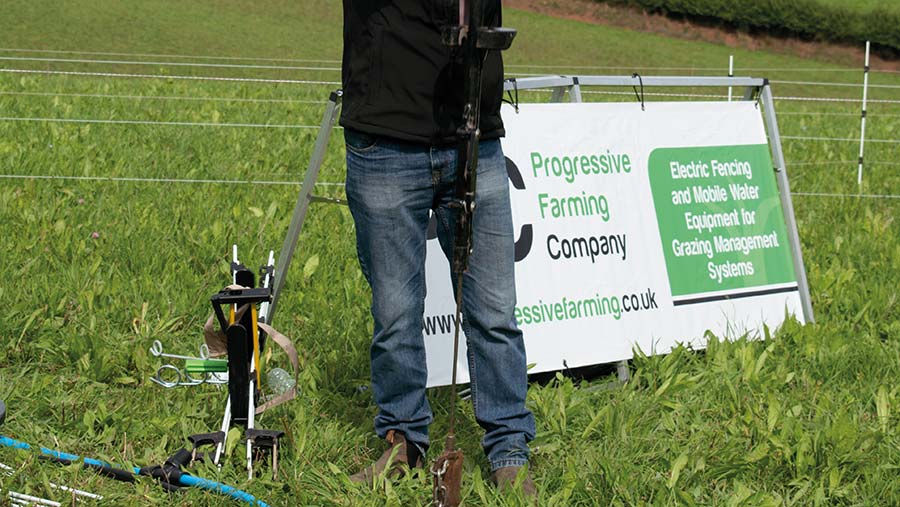
© MAG/Charlotte Cunningham
Post spacing and wire height
As a guide, Ms Daniel recommends 15-20m spacings for a one-wire fence and 8-10m spacings for a five-wire fence.
For boundary fences or any areas of high stock pressure, such as gates or raceways, this spacing should be reduced by 2-5m.
The best way to keep stock behind fencing is to have consistent wire height and good voltage. For farmers fencing on a hill, it is important to maintain the fencing at 90deg to the ground.

John Frizzel © MAG/Charlotte Cunningham
Energising options
To electrify fencing, a motor or an engine is required. This can be powered by mains electricity, battery or solar energy.
When looking at a product, it is important to consider the output, says Mr Frizzell. “Power comes into the energiser [where] it is stored, and this becomes the output.”
The size of the area will then determine what kind out output is needed. “One joule [of output] will give you 10km of fencing – as a rule of thumb,” he says.
In terms of voltage, optimum rate is about 7,000 volts. “If you’re dropping below 3,000 volts, then you’re likely to have a problem somewhere.”
Good earthing is also essential to ensure good resistance (sufficient pulse) on the fencing. Mr Frizzell advocates the 3-2-1 rule to guide this. “Earth rods should be 3m apart, 2m in the ground and [supplied by] one continuous feed.” Rods must also be galvanised.
- Emyr Owen, Emily Daniel and John Frizzel were speaking at a technical farm walk hosted by Chris and Sarah Berry, Higher Thornton Farm, Exeter.
Case study: Tom Burge, Oaremead Farm, Devon
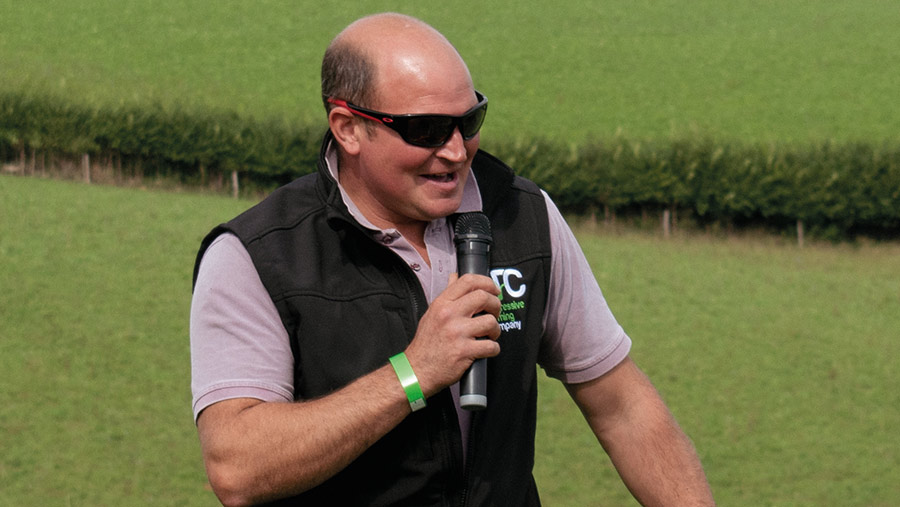
Tom Burge © MAG/Charlotte Cunningham
Farming near Lynton, Exmoor, Tom Burge has implemented a TechnoGrazing system in a bid to grow more grass on his mixed beef and sheep farm.
TechnoGrazing was developed in New Zealand in the 1980s and is a system based on permanent lanes, divided into cells, with temporary electric fencing.
The installation of the system began in 2018 on a small scale. Over the past five years, this has grown to cover the whole farm, which means Mr Burge can now rotationally graze all 285ha (704 acres) on the farm.
The total cost of the fencing – and the water infrastructure – came in at £15,000, but Mr Burge says this has been more than worth it. “When you work it back to [cost] per hectare, it comes to about £50/ha.”
The investment has helped him grow more grass and has also reduced the time needed for daily stock checks, as the animals are all now in a smaller area, explains Mr Burge.
This extra grass growth has enabled him to move to an outdoor lambing system, which has reduced staffing requirements during this time.
Ewes no longer need supplementing with cake – apart from those with triplets – and he has also been able to reduce fertiliser input by 50%.
This year he applied no bagged fertiliser at all. With no supplementation and 50% less fertiliser, this has equated to about a £50,000 saving/year, says Mr Burge.
